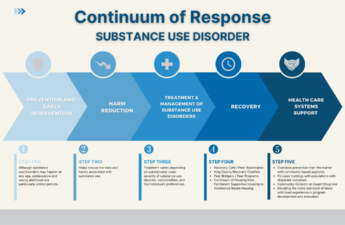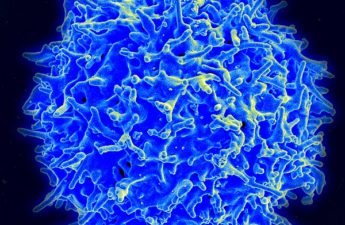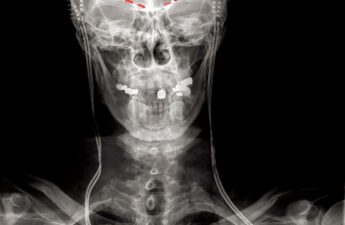Treatment: What’s available and how to access it
Climate Crisis Is on Track to Push One-Third of Humanity Out of Its Most Livable Environment
Climate change is remapping where humans can exist on the planet. As optimum conditions shift away from the equator and toward the poles, more than 600 million people have already been stranded outside of a crucial environmental niche that scientists say best supports life. By late this century 3 to 6 billion people, or between a third and a half of humanity, could be trapped outside of that zone, facing extreme heat, food scarcity and higher death rates, unless emissions are sharply curtailed or mass migration is accommodated.
How wildfire smoke can harm human health, even when the fire is hundreds of miles away – a toxicologist explains
One concern is that smoke can suppress macrophage function in the lung, altering the immune cell’s function enough that you become more susceptible to respiratory infection.
New drugs that melt away pounds present more questions than answers but could be key tools in reducing the obesity epidemic
While these medications hold promise, they are not wonder drugs. In my view, they warrant much more research before they become the basis for a new weight management protocol.
Hot flushes, night sweats, brain fog? Here’s what we know about phytoestrogens for menopausal symptoms
It is estimated more than one-third of women seek complementary or alternative medicines to manage menopausal symptoms. But do they work? Or are they a waste of time and considerable amounts of money?
It’s time to bust the ‘calories in, calories out’ weight-loss myth
One reason the simple “calories in, calories out” formula is not so simple is our bodies don’t consume every calorie the same way. What’s shown in your calorie counter is not what’s actually absorbed in your body. Different calorie sources also have different effects on our hormones, brain response and energy expenditure, changing how we respond to and manage our food intake.
How does your hospital measure up?
Trying to find a hospital nearby with doctors that accept Medicare? Or, perhaps you’re planning to have surgery or are thinking about your future needs. Visit Medicare.gov to find a hospital in your area that best meets your needs.
Cytomegalovirus lies dormant in most US adults and is the leading infectious cause of birth defects, but few have heard of it
“Why didn’t anyone tell me about this virus?” is a frequent response I hear from parents upon learning their newborn is infected with cytomegalovirus, or CMV. Although more than half of the U.S. population will be infected with CMV by the age of 40 and the disease is common worldwide, few people have ever heard of it.
Body dysmorphic disorder: what to know about this mental health condition
Actress Megan Fox recently revealed she had body dysmorphic disorder. Many people are dissatisfied with some aspect of their appearance, but people with body dysmorphic disorder are consumed for several hours a day by intrusive thoughts and feelings about their perceived flaws.
It’s time to leave the Paleo Diet in the past: Recent studies have failed to support its claims
The Paleo Diet has been a worthwhile experiment, but at this point it seems likely that people following it might just be wasting money. Conventional, government-recommended diets offer comparable outcomes at a lower cost. In our view, it’s time to leave the Paleo Diet in the past.
Hot Weather Precautions
Severe heat may cause illness or even death. When temperatures rise to extreme highs, reduce risks by taking the following precautions.
In the “Wild West” of Outpatient Vascular Care, Doctors Can Reap Huge Payments as Patients Risk Life and Limb
To move vascular procedures out of expensive hospitals, the government turbocharged payments to doctors’ offices. Instead of saving money, it started a boom that is making doctors rich and putting patients in danger.
Pancreatic cancer: a personalised mRNA vaccine may boost effects of treatment
Half of the patients treated with the vaccine and immunotherapy combination saw an increase in a specific type of immune cell (called a T cell, which is known to protect against cancer).
Brain signatures for chronic pain identified in a small group of individuals
Chronic pain is one of the largest contributors to disability worldwide. Neuropathic pain is caused by damage to the nervous system itself. It most commonly occurs due to injury to the nerves in our bodies, but for the individuals in this study, their pain is thought to originate from the brain itself. This kind of pain does not respond well to current treatments and can be debilitating for people living with it.
Measles case in King County
Public Health – Seattle & King County is investigating a confirmed measles case in a child. People who were at Aki Kurose Middle School, Pike Place Market, World Market, and HopeCentral Pediatrics & Behavioral Health in Seattle may have been exposed to measles if they were there within the time span that this person passed through while infectious.













